First run of X-Ray tube
For quite some time I wanted to build X-ray "microscope" in order to observe internals of multi-chip packages and MEMS (after etching often you cannot tell how it was assembled in the first place). Main concern is of course safety - I've got 12kg of sheet lead for shielding and radiation detector with thin mica window which could detect (but not measure dose!!) of very low energy x-rays. X-Rays with low energy (generated with 5-10 kV acceleration voltage) have very weak penetration power and could be stopped even by a sheet of paper. So at this point it is relatively safe with main safety issue being high-voltage supply and HV capacitors. Also beryllium from tube's output window is harmful.For few years I was limited by X-Ray tube availability. I happen to get 1 BS7 tube (up to 15kV voltage) - it's power is only 0.02W, but spot size is extremely small and useful for x-ray microscopy - 2 µm. The tube worked fine, but when I got X-Ray fluorescent (intensifying) screen and was anticipating first photos - I opened box with the tube from the wrong end, it slipped and hit the floor. Getting a replacement was impossible - apparently production ceased in Soviet times, and replaced by modern models which could not be obtained that easy.
I was unable to get tubes from domestic manufacturers ("MELZ" and "Svetlana-rentgen"). But finally I was able to find BS5 tube from old Soviet stock - it is designed for higher acceleration voltage (30kV), power is 0.6W but spot size is also larger - 6µm. Friend of mine also got me BSV3 - Soviet monster tube with water cooling, made in 1964(!!!) - it was in storage all these years and it is still operational. Power is immense (400W), but spot size is extremely large, not really suitable for any microscopy.
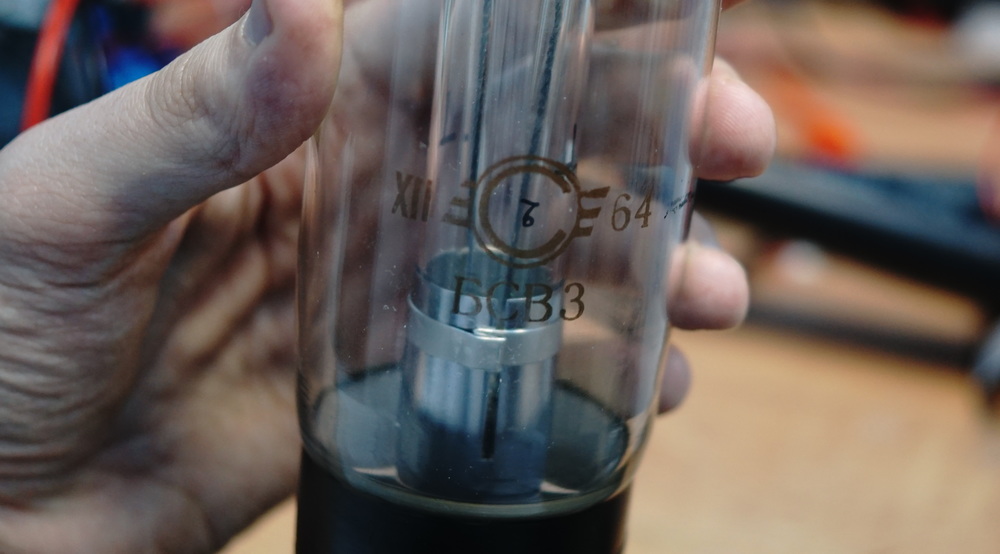
Had to upgrade the tube a little - cap was not fixed and was about to break thin glass insulators for cathode heater:
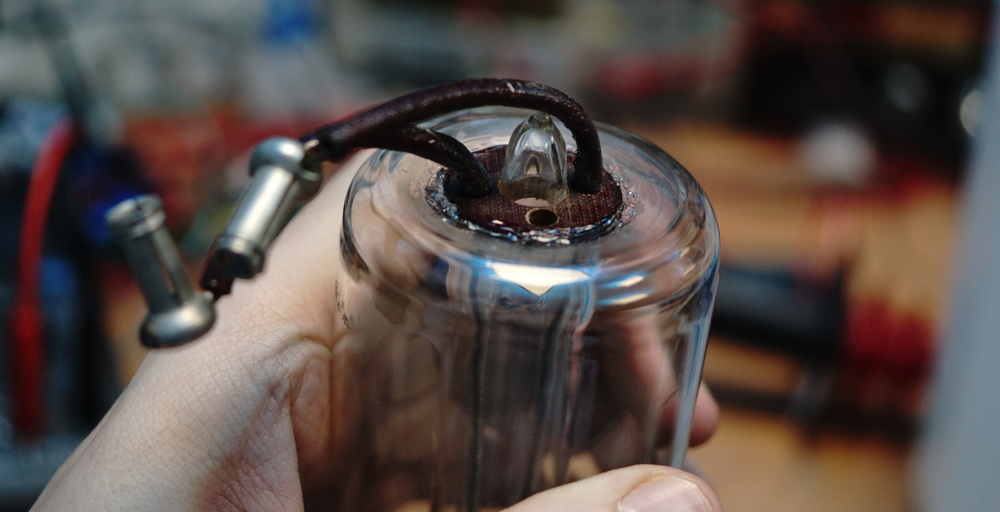
BS5 tube, HV probe for multimeter - 1000:1 ratio. At the bottom - simplest possible HV rectifier - unable to withstand more than 10kV at the moment:
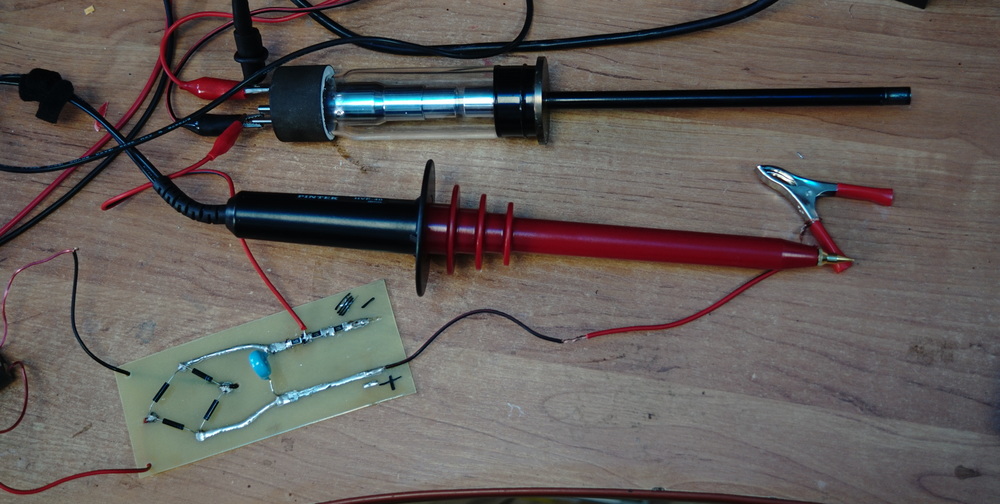
Finally I got first results - at 5kV and 0.18mA I was able to see fluorescent screen glowing. X-Ray energy was so low that it was even unable to penetrate the fluorescent screen. To get any photos I will need to upgrade it to at least 20kV.
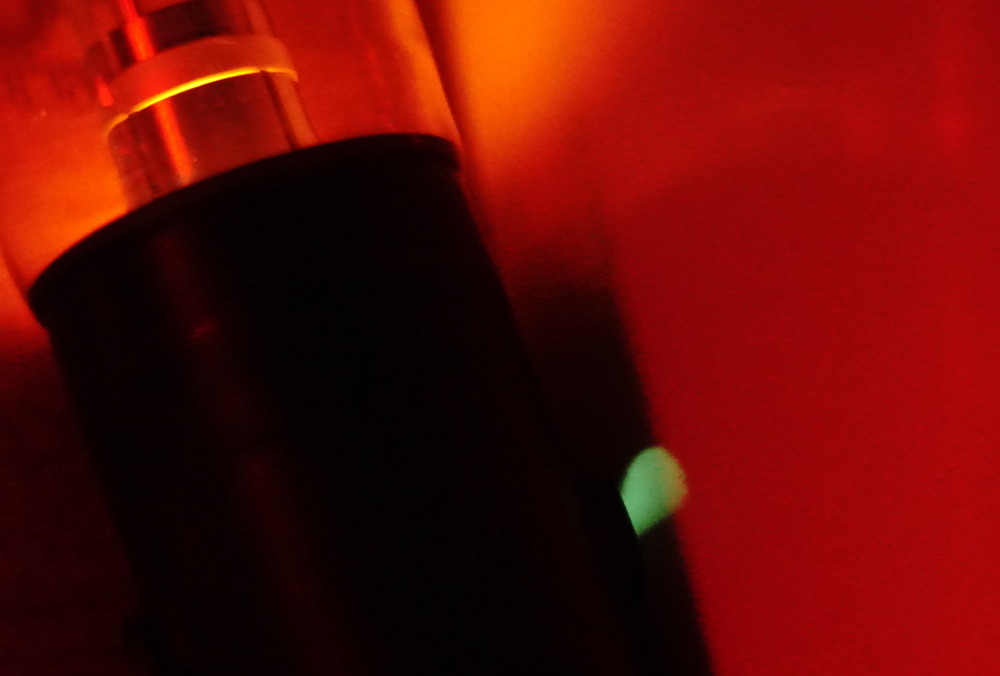
Geiger counter is off the scale - one can see continuous discharge through mica window. Bad dosimeters in this situation could even say that there is no radiation... It is very hard to accurately measure dose rate for low-energy x-ray radiation, but it is "safe" to assume that if you can detect it - it is already too dangerous. Calculations based on tube power suggests that inside this tiny green spot dose rate is about 0.32 Sieverts/hour which is extremely high (annual dose limit is typically 0.05 Sv). But due to low energy/low penetrating power all you can get from it - skin burn and if you are lucky - some skin cancer. Sad part is that Geiger detectors with metal tubes (which are the ones typically owned by amateurs) will never be able to detect any radiation here - as weak x-rays just cannot penetrate these thin metal walls. Somewhat scary.
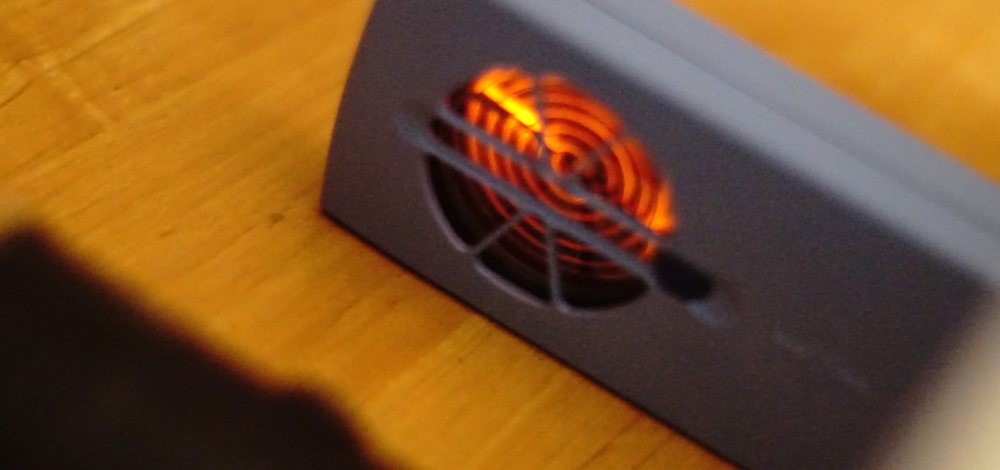





 @BarsMonster
@BarsMonster